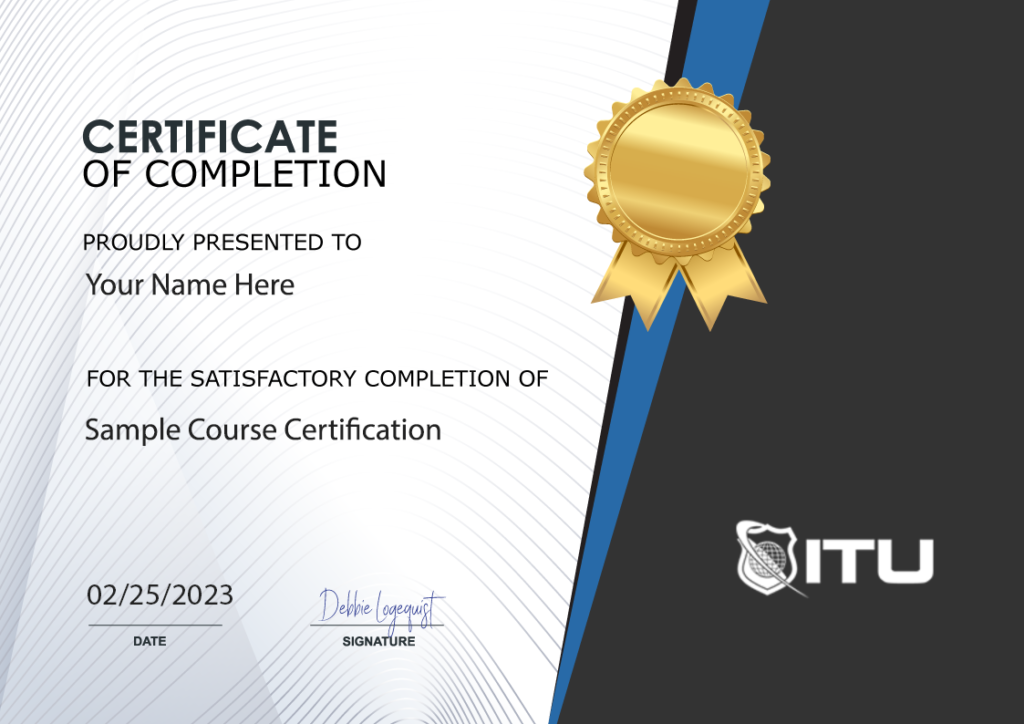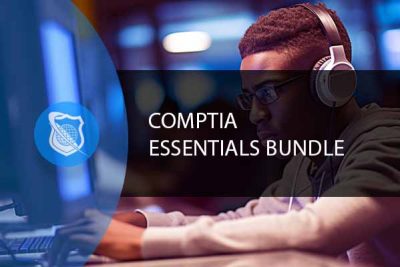
Lifetime
An ITU Online Training exclusive. The only Buy Once, Never Pay for IT training again program available. Plus, get all new and updated content for life.

With an All-Access Pass, you get access to every current and future ITU course. Access over 2,500 hours of on-demand IT Training 24/7. With over 13,000 on-demand training videos and 19,000+ practice questions, you'll have the tools to excel in the critical IT skills needed to elevate your IT Career. Our All-Access pass is available in three affordable plans.
Paris is the capital of France.
Tokyo is the capital of Japan.
Most Popular
Categories

With an All-Access Pass, you get access to every current and future ITU course. Access over 2,500 hours of on-demand IT Training 24/7. With over 13,000 on-demand training videos and 19,000+ practice questions, you'll have the tools to excel in the critical IT skills needed to elevate your IT Career. Our All-Access pass is available in three affordable plans.

ITU provides a vast array of IT-focused on-demand training designed to help you excel in both entry-level and advanced IT skills. Browse our most popular training or take a deper dive into our robust catalog of training categories.
Popular Courses All Categories




Are you looking to sharpen your IT skills and get certified? Look no further! This essential CompTIA certification training bundle offers A+, Network+ and Security+ certifications that are highly valued technical skills. Our IT course is loaded with over 100 hours of digital bootcamp, flashcards, games, exam questions and more.
Included In This Course
Closed Captions
Certificate of Completion
Course Description
Your essential CompTIA certification training bundle includes A+, Network+, and Security+. A CompTIA certification is widely valued in IT careers and training. You will receive three courses with over 100 hours of training that includes digital video bootcamps, flashcards, games, and practice exam questions. Whether you are new to IT, or looking for instruction and study material to pass your recertification exams, this bundle contains everything you can possibly need.
This CompTIA certification bundle includes the following courses:
Passing a series of exams developed by IT industry experts is the only way to receive your CompTIA A+ certification. However, this accreditation isn’t limited to just PC repair; it provides you with aptitude in handling and resolving an array of tech issues from networking and OS problems to security on mobile devices. With a wider range of information than any other certification, CompTIA A+ is the most relevant and up-to-date credential for today’s technicians. Rather than just focusing on one domain, its courses equip you with multiple skills that can be applied in countless job roles. When you master these essential CompTIA certification courses, you’ll be prepared to continue your path to more intensive training and certifications.
With CompTIA A+, IT students are equipped with the tools necessary to access valuable data regardless of the device being used To excel in this field, key skills and knowledge include:
CompTIA A+ 1100 series is tailored to the needs of a hybrid workforce and equips IT professionals with essential knowledge and aptitudes that are required in current technology.
CompTIA Network+ equips IT professionals with the competencies necessary to ensure a secure and resilient network, ranging from configuring and managing wired/wireless devices to grasping essential security concepts, cloud computing best practices, cutting-edge hardware technologies and virtualization techniques.
Possible job opportunities:
By passing the Security+ exam, you can prove that you possess the necessary knowledge and abilities to evaluate a business’s security posture, suggest and apply proper security systems, observe hybrid environments securely and with compliance of relevant laws & regulations as well as recognize, assess, and react to safety incidents. This IT course is recommended for IT administration with 2+ years of experience and a focus on security.
Possible job opportunities:
The Essential CompTIA Certification training bundle includes comprehensive training for three CompTIA certifications: A+, Network+, and Security+. The bundle consists of over 100 hours of training that includes digital video bootcamps, flashcards, games, and practice exam questions. The specific courses included are CompTIA A+ 220-1101 (Core 1), CompTIA A+ 220-1102 (Core 2), CompTIA Network+ N10-008, and CompTIA Security+ (SY0-601).
This training bundle is suitable for both individuals new to IT and those looking for instruction and study material to pass their recertification exams. The CompTIA A+ certification is generally seen as an entry-level rite of passage for IT technicians, while the Network+ and Security+ certifications are suitable for professionals with some experience in networking and security respectively.
The courses are delivered as on-demand content, which means you can access the training materials at any time that is convenient for you. The training materials include digital video bootcamps, flashcards, games, and practice exam questions.
The training bundle offers 101 hours of training across 60 topics, with 545 videos and 778 practice questions to aid your learning.
CompTIA certifications are widely recognized in the IT industry and can help improve your career prospects. The A+ certification is a requirement for service technicians at Dell, Intel, and HP, and is recognized by the U.S. Department of Defense. The Network+ certification is recommended or required by Dell, HP, and Intel, and is also an accepted entry-point certification for the Apple Consultants Network. The Security+ certification, while not having any prerequisites, is recommended for individuals with at least two years of IT administration experience with a security focus.
ou can get access to this training and over 2,500 hours of on-demand content with the All Access Monthly Subscription offered by ITU Online. You can start today with 7 free days and there’s no obligation, meaning you can cancel anytime.

Course Outline
Chrys Thorsen is an education and technology expert who specializes in enterprise-level IT infrastructure consulting and certified training-of-trainers. In her career, she has garnered over 50 IT Certifications including CISSP, CISA, CEHv12, PenTest+, CompTIA CNVP, Cisco CCSI/CCNP, Microsoft Cloud and on-premises technologies, VMware vSphere, and many more. She has also authored 40 published certification textbooks, and over 35 full-length IT certification video courses.
When not working in the United States, Chrys spends her time abroad capacity-building IT literacy in developing nations in Sub-Saharan Africa. Her client list has included: the US Federal Government, the Republic of Zambia Ministry of Health, Cavendish University Zambia, Accenture, JP Morgan Chase, the US Centers for Disease Control and Prevention, the Elizabeth Glaser Pediatric AIDS Foundation (EGPAF), Hughes Aircraft, Microsoft, and many more.
Chrys lives by, and is fond of repeating, her professional creed:
“The only true measure of success for any project or training is results on the ground. Everything else is just noise.” “I teach what I deploy; I deploy what I teach.”
Anton Santucci is a seasoned IT instructor with over 20 years of experience in the field. He is currently serving as an ITU instructor for the A+ Certification Course and teaching both online and in-person computer training at Hillsborough Community College (HCC) in Florida. Anton holds an Associate's Degree in Information Systems Management and is skilled in delivering complex IT information to students in a way that is easy to understand and enjoy.
He started his career as a Microsoft Certified Trainer (MCT) and has since gained expertise in CompTIA certifications such as A+, Net+, and Security+. He also holds the CEH (Certified Ethical Hacker) certification. With five years as a Network Administrator for a career college in Florida and global experience as a corporate trainer, Anton brings a wealth of knowledge and experience to his classes.
With a belief that training can be both informative and entertaining, Anton uses humor, mnemonic devices, and questions to engage his students and ensure they retain the skills they need to succeed in the workplace. In his personal life, Anton is a passionate traveler and a fan of the Giants. He looks forward to helping you achieve your certification goals while getting to know you along the way.
$59.00
Gain access to this training and all our other courses, offering over 2,500 hours of content, with our cost-effective monthly subscription. No obligations. Cancel anytime.

Monthly All-Access Subscription
7 Days Free - $39.00 / month
A great option at an affordable monthly price.
Annual All-Access Subscription
$229 / year
A discounted price when paying for your All Access library on an annual basis.
Lifetime All-Access Library
$379 One time payment
Exceptional Value. Pay once, never have to buy IT training again.
$49.00
$59.00
If you’re aspiring to become an MTA certified professional, then this bundle is perfect for you! It both covers and prepares students on the Microsoft Technology Associate (MTA) Windows Server 2016 Administration (98-365), Networking Fundamentals (98-366), and Security Fundamentals (98-367). With only one exam required to achieve certification, it’s never been easier than now.
This online medical billing and coding course covers medical terminology, knowledge of body systems, and how to select the correct diagnosis and procedure codes. This course will also teach you how to complete billing guidelines needed to submit claims to insurance companies and receive payment. This course covers the objectives needed to pass the ICD 10 and ICD 11 certification exam.

Unlock endless learning opportunities with over 2,500 hours of IT training at our lowest price ever. Plus, get all new and updated online courses for free while your subscription remains active.
Cancel at your convenience. This exceptional deal on IT training provides you access to high-quality IT education at the lowest monthly subscription rate in the market. Boost your IT skills and join our journey towards a smarter tomorrow.
Smooth delivery and easy access to LMS. Good to see that the LMS offers progress tracking. Would be great if badges were offered on completion of courses to share via Credly to future employers.